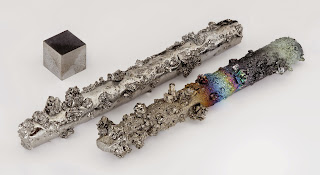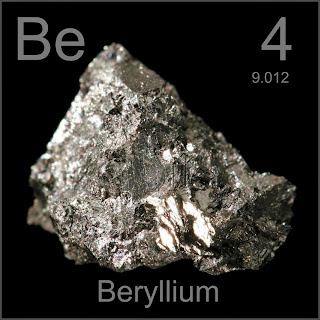I hope you and yours are doing well. I am doing great, thanks be to God! As some of you may know, April commemorates Earth Month! If you are connected with me on Facebook, you will have noticed that every day last month, I posted interesting tidbits about planet Earth in my Thank You, Mother Earth series. Below is a summary of Earth Month 2015, the final week:
Day 22: Molybdenum
The name (Molybdenum) is from Neo-Latin molybdaenum, from Ancient Greek molybdos, meaning lead, since its ores were confused with lead ores. Used in alloy steels to make automotive parts, construction equipment, gas transmission pipes; stainless steels; tool steels; cast irons; super alloys; and chemicals and lubricants. As a pure metal, molybdenum is used because of its high melting temperatures (4,730 F) as filament supports in light bulbs, metalworking dies and furnace parts. Major producers are the United States, Chile, China, and Peru.
Day 23: Zeolite
Zeolites are microporous, aluminosilicate minerals commonly used as commercial adsorbents and catalysts. Natural zeolites form where volcanic rocks and ash layers react with alkaline groundwater. Zeolites also crystallize in post-depositional environments over periods ranging from thousands to millions of years in shallow marine basins. Zeolites are used in animal feed, cat litter, cement, aquaculture (fish hatcheries for removing ammonia from the water); water softener and purification; in catalysts; odor control; and for removing radioactive ions from nuclear plant effluent.
Day 24: Silver
Silver is used in coins and medals, electrical and electronic devices, industrial applications, jewelry, silverware and photography. The physical properties of silver include ductility, electronics conductivity, malleability and reflectivity. Used in lining vats and other equipment for chemical reaction vessels, water distillation, etc.; a catalyst in manufacture of ethylene; mirrors; silver plating; table cutlery; dental, medical and scientific equipment; bearing metal; magnet windings; brazing alloys, solder. Also used in catalytic converters, cell phone covers, electronics, circuit boards, bandages for wound care and batteries. Silver is produced in the U.S. at over 30 base and precious metal mines primarily in Alaska and Nevada. The leading global producers include Mexico, China, Peru, Chile, Australia, Bolivia and the U.S. The U.S. was 57% reliant in 2012.
Sodium carbonate (soda ash or trona) is used in glass container manufacture; in fiberglass and specialty glass; also used in production of flat glass; in liquid detergents; in medicine; as a food additive; photography; cleaning and boiler compounds; pH control of water. Most U.S. production comes from Wyoming. The U.S. is a major producer. Trona, is mined in several areas of the US and provides nearly all the domestic consumption of sodium carbonate. Large natural deposits found in 1938, such as the one near Green River, Wyoming, have made mining more economical than industrial production in North America.
There are many species of tantalum minerals, only some of which are so far being used by industry as raw materials: tantalite, microlite, wodginite, euxenite, polycrase. Tantalite is the most important mineral for tantalum extraction. Tantalite has the same mineral structure as columbite; when there is more tantalum than niobium it is called tantalite and when there is more niobium than tantalum is it called columbite (or niobite). Tantalum is a a refractory metal with unique electrical, chemical and physical properties used to produce electronic components, tantalum capacitors (in auto electronics, pagers, personal computers and portable telephones) ; for high-purity tantalum metals in products ranging from weapon systems to superconductors; high-speed tools; catalyst; sutures and body implants; electronic circuitry; thin-film components. Used in optical glass and electroplating devices.
Day 27: Tungsten
More than half of the tungsten (also known as Wolfram) consumed in the United States is used in cemented carbide parts for cutting and wear-resistant materials, primarily in the construction, metalworking, mining, and oil- and gas-drilling industries. The remaining tungsten is consumed to make tungsten heavy alloys for applications requiring high density; electrodes, filaments, wires, and other components for electrical, electronic, heating, lighting, and welding applications; steels, superalloys, and wear-resistant alloys; and chemicals for various applications.
A clay pit is a quarry or mine for the extraction of clay, which is generally used for manufacturing pottery, bricks or Portland cement. Clay is used in floor and wall tile as an absorbent, in sanitation, mud drilling, foundry sand bond, iron pelletizing, and light weight aggregate. It is produced in 40 states. Ball clay is used in floor and wall tile. Bentonite is used for drilling mud, pet waste absorbent, iron ore pelletizing and foundry sand bond. Kaolin is used for paper coating and filling, refractory products, fiberglass, paint, rubber and catalyst manufacture. Common clay is used in brick, light aggregate and cement.
Day 29: Beryllium
Beryllium is used in the nuclear industry and to make light, very strong alloys used in the aircraft industry. Beryllium salts are used in fluorescent lamps, in X-ray tubes and as a deoxidizer in bronze metallurgy. Beryl is the gem stones emerald and aquamarine. It is used in computers, telecommunication products, aerospace and defense applications, appliances and automotive and consumer electronics. Also used in medical equipment. The U.S. was 10 percent import reliant in 2012.
Day 30: Environmentalism
 |
| Woman of the Earth Miss Earth Maryland 2015 Ruby B. Johnson |
Ruby B. Johnson,
Your Miss Earth Maryland 2015
Continuing the legacy of beauty and responsibility
Help me compete at Miss Earth United States 2015. DONATE HERE
 |
| Ruby B. Johnson Seeking Sponsors for Miss Earth United States 2015 |








